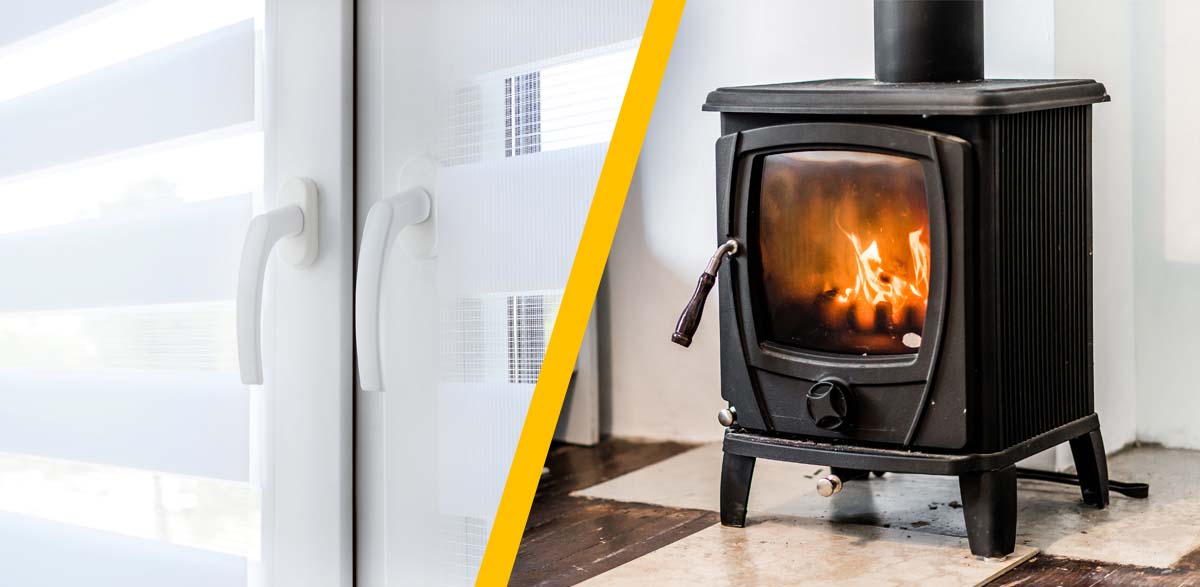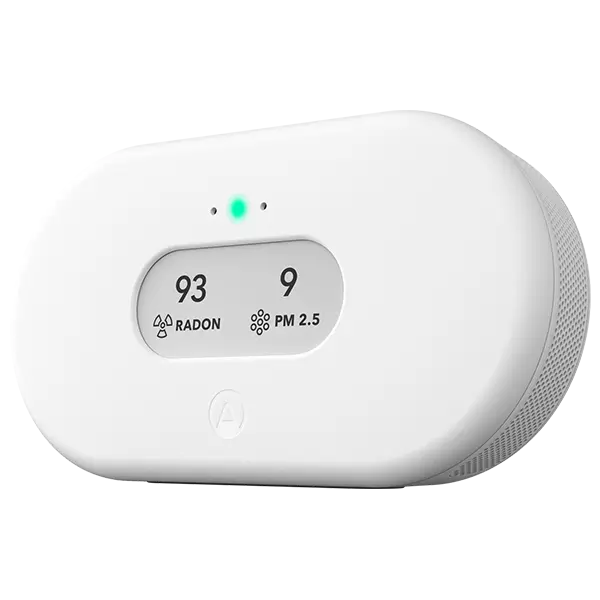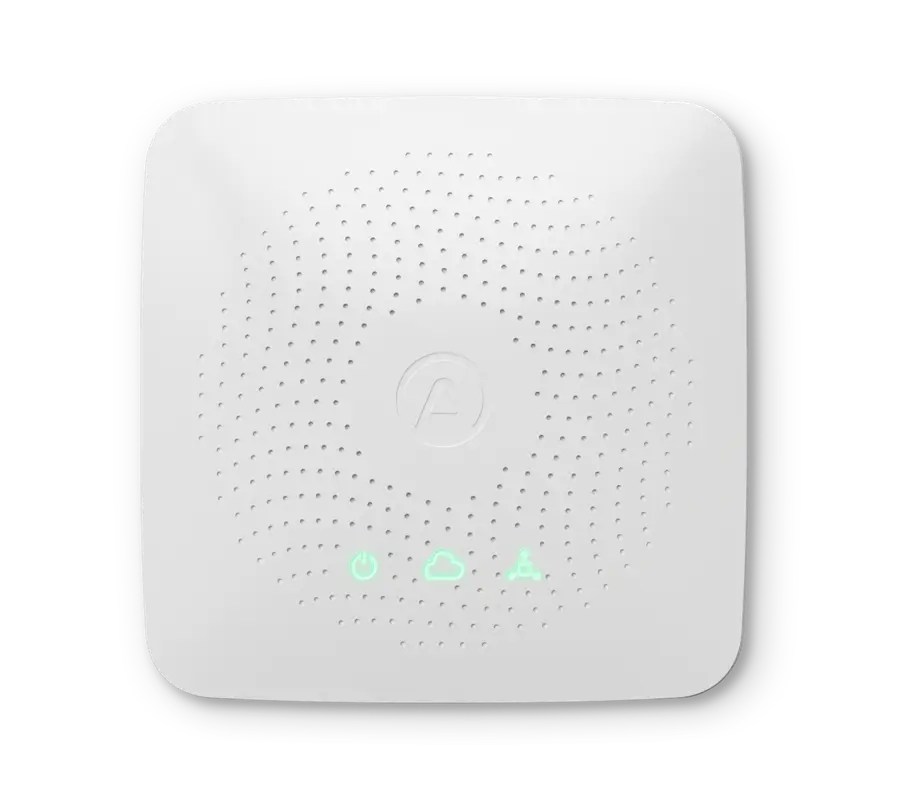In colder months it's typically for heating bills to rise. As they rise you may be looking for alternative ways to make your home as cozy as possible - increasingly, people seem to be flocking back to wood-burning stoves to heat their homes as a seemingly more affordable alternative to electric or gas heating. In this article we take a look at the effects of these fire-based heating systems, some alternatives to heating your home, and how to reduce indoor pollution levels should you need to heat your home via fire this winter.
The research on fireplaces and indoor air quality
Fires are extremely inefficient heat producers compared to other forms of heating, such as thermal, induction, or gas-based heating [1]. Additionally, fires are typically very harmful because they produce air pollutants that circulate in your home and make their way into your lungs. These pollutants are categorized as particulate matter or PM [2]. Unfortunately, this pollution has adverse effects on your health. Recent research found links between fireplace-produced air pollution and bronchitis, worsening of heart conditions or cardiovascular issues, and asthmatic attacks experienced by predisposed individuals [3].

What is the safest way to heat your home without affecting air quality?
As well as impacting your indoor air quality, a 2022 study regarding home heating solutions found wood burning was amongst the least environmentally friendly ways to heat your home in terms of effects on outdoor air pollution and sustainability on top of being one of the least effective methods of creating heat itself [4][5]. So, what are your options if you want to move away from a fire-based heating system? Below you'll find three of the most prominent alternatives to fireplace heating, although this is not an exhaustive list.
1. Geothermal heating is the direct use of geothermal energy from the earth for some heating applications. Construction of a geothermal heating system can initially be cost and time-intensive but there are several benefits such as long-term cost savings, decreased pollution, and renewability.
2. Induction heating is the process of heating electrically conductive materials, namely metals or semiconductors, by electromagnetic induction, which results in a heat transfer. These systems allow precise temperature control, and localized heating, and typically produce little to no air pollution.
3. Solar heating is the use of the sun's thermal energy to heat the fluid in solar cells. Then, this fluid passes through a heat exchanger in the storage tank, transferring the heat to the water. While typically based in colder climates a solar heating system is free after installation and maintenance bears almost no carbon footprint.
"My neighbors light their fireplaces, will this affect me?" - Yes.
Knowing the potential harms of a fireplace you may be able to avoid using it to heat your home, but you can't control what your neighbors do for example. Unfortunately, smoke from your neighbor's fireplaces can pollute the air in your home in much the same way as wildfires do.
Using an air purifier and monitoring your indoor air quality can be an effective way to be aware of and attempt to mitigate the outdoor air that is making its way into your home. Your air quality monitor for example will be able to let you know when PM levels are high by which point you will know to close your windows and increase the speed of your air purifier.
How to light and maintain your fire while minimizing pollution
If you have no choice but to light your fireplace this winter we recommend some safety precautions. Make sure your wood stove is approved by a governmental body like the Environmental Protection Agency, those outside of the U.S. should consult their local environmental protection laws as they may differ. Firstly, always follow the instructions supplied with your fireplace or wood-burning stove. So long as you're complying with the proper use of your stove, we recommend using dry wood or other non-smoky fuel and avoiding newspapers, painted or finished wood for lighting as these can contain harmful chemicals that will off-gas into your air. When lighting the fire it is recommended to light from the top, this is referred to as "top-down" lighting. This is preferable to “bottom-up” lighting because it provides greater control of the gasification process and reduces the rate at which particles are emitted from the fire [6].
While the fire is burning add small amounts of wood or other low or non-smoke fuels incrementally. Adding fuel incrementally will result in more stable operating conditions, more even heat output, and lower overall emissions with comparable heat output [7]. After you are finished lighting the fire make sure to cover it with a smoke screen or a non-flammable covering if you have a stove or oven heater. When the fire has died take extra care to ventilate any smoke properly.
Finally, take care to organize a professional to clean and inspect your chimney on an annual or bi-annual basis. Keeping the airways funneling smoke from the fire relatively clear maintains the proper airflow of particles out of your home as opposed to back into it, avoids potential issues with carbon monoxide or other toxic gases, and mitigates the risk of chimney fires [8].
How do I know if I'm reducing the air pollution in my home?
Continuous air quality monitoring with a device that lives in the same space as you is the easiest and most reliable way to verify you and your family are breathing clean air this winter and beyond.
If you can't afford an air quality monitor or aren't interested in getting one, you may also feel the benefits of healthier air through a reduction in labored breathing, fewer headaches, and a less irritated throat. 
1. https://www.sciencedirect.com/science/article/pii/S235248471630002
2. https://pubmed.ncbi.nlm.nih.gov/17127644/
3. https://www.uhhospitals.org/blog/articles/2020/01/why-a-wood-burning-fireplace-could-be-hazardous-to-your-health
4. https://www.sciencedirect.com/science/article/pii/S0301421519304161?via%3Dihu
5. https://onlinelibrary.wiley.com/doi/10.1111/gcbb.12327
6. https://www2.mst.dk/Udgiv/publikationer/2017/11/978-87-93614-42-0.pdf
7. https://mffire.com/wood-stove-101-perfect-way-build-fire-top/
8. https://www.chimney.com/blog/5-important-benefits-of-chimney-cleaning/












%20(1).webp)

%20(1).webp)
